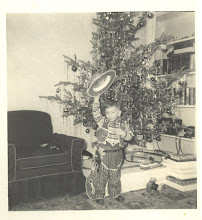Since writing that blog post about the first falling of the sugar maple leaves a few days ago I've really been paying attention to how differently the trees behave as the cold weather comes on.
The sugar maple is all but bare now, but the leaves of the red maples aren't even close to reaching their full color; and the silver maples have barely reached full color, not that their feeble attempt at color is all that impressive. And then there are the sweetgums and the poplars, whose leaves haven't even shown any awareness that fall is here. Then, of course, you have the black walnuts, which lost their leaves a month or so ago; but nobody noticed because the darn things look half naked even when they're all leafed out.
For years after we bought the property I thought there might be something wrong with the black walnuts. They get their leaves last in the spring, they never really seem fully leafed out, and they lose their leaves first in the fall. It doesn't seem like a very efficient survival and growth strategy. And yet black walnuts seem to grow fast enough to hold their own very well in the pasture areas that I've let go wild since we got rid of the horses. Of course, I keep in mind that one year way back I scattered a bucket of walnuts around and thus gave them an assist. And then there is the fact that big nutrient rich seeds like walnuts surely give their seedlings an advantage. But still, the walnut trees must compete year in and year out in the wild growing areas with everything else, and they seem to do that just fine despite their seemingly inefficient leaf practices.
At the other extreme from the walnuts are the hybrid poplars. They're the first trees with full grown leaves in the spring; and the damn things hold their leaves in fall until well after I want them off the trees so I can grind them up with the mower. My tractor can't carry its John Deere belly mower and it's John Deere snow plow at the same time because some John Deere engineer who designed those attachments was an idiot; so every year there is a fine decision to make about when to get the dealer to send his guy over to take off the mower and put on the plow. Switch too soon and the drifts of unmown poplar leaves will irritate me a little bit every windy day for most of the winter. Switch too late and the lack of the plow will irritate me a whole lot all on one day if we get an early snow.
Rereading that last paragraph, I'm compelled to point out that most of the John Deere engineers who designed my tractor thirty or so years ago were manifestly not idiots. That tractor has been through a lot with me for the past twenty two years, and I mean a lot. I've never tested it's roll bar; but I've tested the strength of many other parts of the machine; and all of those parts are still on there. It has failed to start when needed only one time in more than twenty years and that was because some idiot let the water level in its battery recede below the top of the plates. Furthermore, it has only overheated twice in over twenty years of hard use despite the fact that it's air filter has only had the dust knocked out of it four or five times and the debris screen in front of the air intake has only been cleaned four or five times, two of which in each case were just after it overheated. All in all, John Deere's engineers should be proud of themselves, except for he one who designed the underbelly mower hitch so that it interferes with the plow attachment point. Everything else I can forgive; but that I can't forgive.
But back to the poplars. We had our first fire in the woodstove last evening, a fire made from some of the last wood from the big poplar that grew too big to be left to grow so near the house. Like it's twin, which is about forty feet from the house, that poplar grew about six feet per year for the first fifteen years of its life and it started providing serious shade when it was only five or six years old. It was almost three feet in diameter at twenty years old. Of course, besides shade it also provided no end of little sticky bud husks each spring - little sticky bud husks that were tracked all over the house. It also sent a big root under the bricks of the patio and a little root into the basement through the drain to get at the condensation water from the heat pump. But it was on balance a great tree, and it's been a great provider of heat from the woodstove since I had to have it cut down to put a stop to its unsociable behavior.
Update: 80 64 85 :< (
Wednesday, October 29, 2008
Falling leaves
Labels:
black walnuts,
hybrid poplars,
John Deere,
leaves,
mower,
plow,
red maples,
roots,
silver maples,
sugar maple,
tractor
Subscribe to:
Post Comments (Atom)

No comments:
Post a Comment